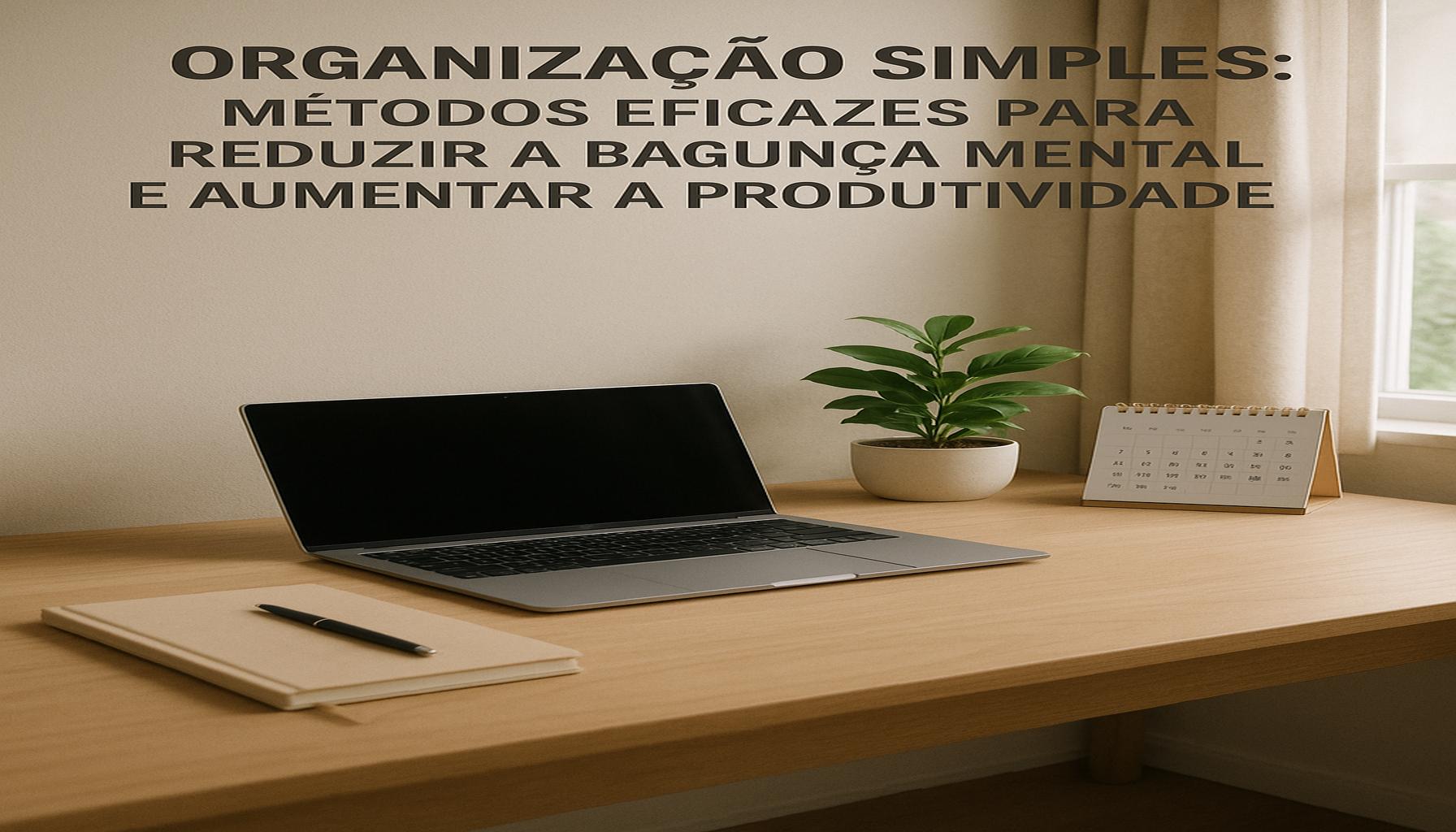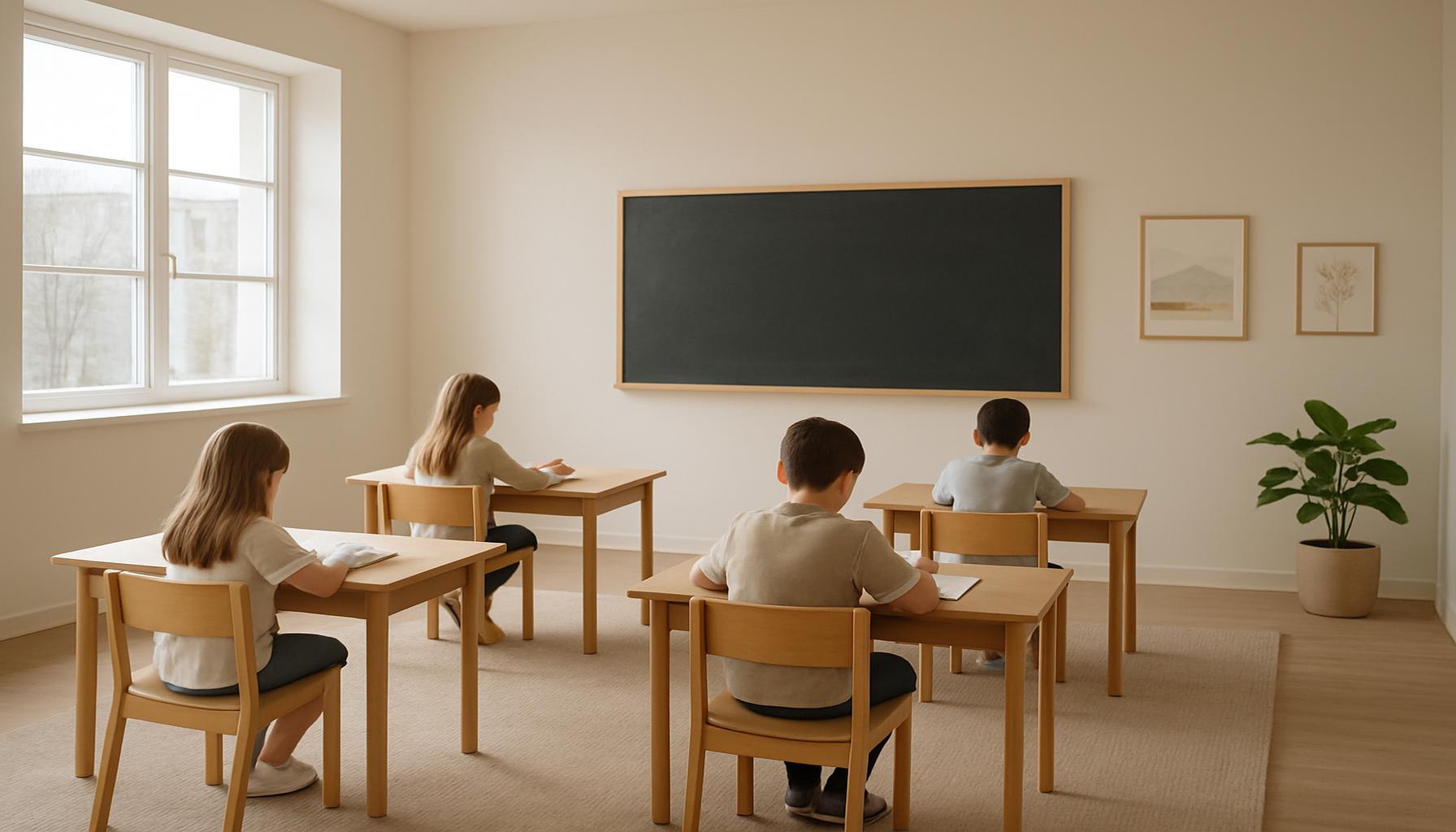Simple Organization: Effective Methods to Reduce Mental Clutter and Increase Productivity

Unlocking Your Potential
Amid the chaos of modern life, mental clutter can be a significant barrier to productivity. From overwhelming schedules to endless to-do lists, clarity often feels out of reach. Fortunately, there are effective methods to achieve simple organization, providing a path to clearer thinking and enhanced efficiency. With the ever-increasing demands of work, family, and social obligations, many Americans find themselves stretched thin. The ongoing barrage of notifications and responsibilities can quickly lead to mental fatigue, causing us to become less effective in our daily tasks.
Why Mental Clutter Matters
Reducing mental clutter can lead to:
- Improved focus: By minimizing distractions, individuals can concentrate better on the tasks at hand, whether it’s completing a work project or studying for an exam.
- Increased creativity: A clear mind fosters innovative thinking, allowing for new ideas and solutions to emerge, which is particularly important in creative professions.
- Better decision-making: With less mental noise, individuals can weigh options more carefully, ensuring that choices are made based on logic rather than overwhelming emotion.
Understanding the impact of disorganization is crucial. Research indicates that a tidy environment can lead to heightened productivity and reduced stress levels, fostering an atmosphere conducive to success. For example, a study conducted by psychologists at Princeton University revealed that participants working in cluttered spaces were more distracted and unable to focus effectively compared to those in organized environments. This highlights how mental clarity can be achieved by prioritizing our physical spaces.
Simple Organization Techniques
Implementing straightforward organizational techniques can drastically change how you tackle daily tasks. Here are some effective methods that can be easily incorporated into anyone’s routine:
- Prioritize your tasks using the Eisenhower Box: This technique helps distinguish between tasks that are urgent and important, allowing you to focus your time and effort where it truly counts.
- Declutter your workspace regularly: Taking a few minutes each week to remove unneeded items from your desk or digital workspace can lead to a significant improvement in mental clarity and productivity.
- Utilize digital tools for task management: Applications like Todoist, Trello, or Google Keep can help organize tasks, set deadlines, and track progress, aiding in maintaining focus on what needs to be accomplished.
By embracing these strategies, you can transform not just your workspace but also your overall mental state. It is important to recognize that becoming organized is not a one-time event but a continuous process. The act of regularly assessing and adjusting your strategies is vital in maintaining focus and clarity amidst life’s chaos. Join us as we delve deeper into innovative approaches that will help reduce mental clutter and significantly boost your productivity.
DIVE DEEPER: Click here to uncover essential minimalism tips
Transforming Your Daily Workflow
When it comes to enhancing productivity, a key factor lies in simple organization. This doesn’t just pertain to tidying up your physical spaces but extends to refining mental processes as well. Without an organized approach, tasks can become overwhelming, especially when juggling multiple responsibilities. By embracing methods that streamline our workload, we can significantly cut through the noise and fatigue that often accompanies a cluttered mind.
The Benefits of Organization
Implementing organization techniques can yield numerous benefits:
- Enhanced time management: Learning to organize tasks means utilizing your time more effectively. Individuals report spending up to several hours each week simply searching for items or trying to recall important deadlines. By having a structured approach, you can reclaim this time.
- Reduced stress levels: Clutter, whether physical or mental, can be a source of stress. Studies have shown that individuals in organized environments experience lower levels of anxiety and improved moods, making it easier to tackle tasks with a fresh perspective.
- Higher accountability: When tasks are organized, it becomes easier to track progress and hold oneself accountable. Keeping a checklist or a visual tracker fosters a sense of accomplishment, propelling you forward.
Research highlights a notable connection between organization and emotional well-being. According to a study by the National Institute of Mental Health, disorganization can lead to increased feelings of frustration, which can further deplete one’s productivity. Conversely, those who maintain a structured system tend to report higher satisfaction in their professional and personal lives.
Effective Organization Techniques to Implement
Not all organization techniques require significant time or effort. Here are a few methods that can be smoothly integrated into your daily routine:
- Create a daily agenda: At the beginning of each day, take a moment to outline your most pressing tasks. This simple act not only gives you a clear direction for the day ahead but also minimizes the likelihood of forgetting essential responsibilities.
- Adopt the two-minute rule: If a task can be completed in two minutes or less, do it immediately. This method helps prevent small tasks from accumulating, which can contribute to mental clutter.
- Establish a ‘brain dump’ practice: Spend ten minutes each week writing down everything on your mind. This can include tasks, ideas, or worries. Once on paper, you can prioritize them effectively, relieving your mind of burdening thoughts.
These strategies not only pave the way for greater efficiency but also nurture a more serene mental state. As you begin to incorporate these simple organization techniques, you’ll likely find your capacity for productivity expanding. The journey toward a clutter-free mindset starts with these manageable steps. So, let’s explore how you can refine your approach further to unlock even more potential.
| Organization Method | Benefits |
|---|---|
| Digital Decluttering | Increases focus by reducing distractions from unnecessary files and notifications. |
| Time Blocking | Enhances productivity by allocating specific time slots for tasks, creating a structured work routine. |
| Minimalism in Workspace | Promotes clarity and creativity by limiting clutter, allowing for a more effective decision-making process. |
| Routine Evaluation | Identifies inefficiencies and prioritizes essential tasks, leading to a better-managed daily workflow. |
The methodologies outlined above represent just a few of the effective techniques aimed at achieving a more organized life. By embracing digital decluttering, individuals can rid themselves of the excess noise of unimportant digital files which can often derail concentration. Implementing time blocking into your schedule not only streamlines productivity but also encourages a disciplined approach to time management. Moreover, maintaining a minimalist workspace fosters a serene environment, prompting enhanced creativity and focus. Lastly, regularly evaluating routines allows individuals to discern which practices lead to productivity and which may contribute to chaos, ensuring that each day is geared towards achieving productive goals. Exploring these methods in more detail could transform your work life fundamentally, paving the way for higher efficiency and decreased mental clutter.
DIVE DEEPER: Click here to discover more
Refining Your Thought Processes
While physical organization plays a pivotal role in enhancing productivity, it is equally important to focus on mental organization. An organized mind is a well-oiled machine, ready to take on the challenges of the day. By refining thought processes and implementing daily habits that prioritize mental clarity, we can substantially decrease mental clutter and improve decision-making abilities.
Cultivating Mindfulness to Clear Mental Clutter
Incorporating mindfulness practices into your routine can substantially reduce mental clutter. Mindfulness fosters a greater awareness of thoughts and feelings, allowing individuals to distance themselves from distractions and focus on the task at hand. Research published in the journal Mindfulness has shown that regular mindfulness meditation can lead to improved concentration and increased cognitive flexibility. Here are some practices that can elevate your mental organization:
- Daily meditation: Just five to ten minutes of meditation each day can create a calming effect and help clear the mind. Apps like Headspace or Calm can guide beginners in establishing this essential practice.
- Breath control exercises: Utilizing breathing techniques, such as the 4-7-8 method, where you inhale for four seconds, hold for seven, and exhale for eight, can help center your focus, making it easier to prioritize your tasks.
- Visualization techniques: When faced with a challenging task, visualizing yourself successfully completing it can ease anxiety and promote goal-oriented thinking.
Studies suggest that people who employ mindfulness techniques report a greater sense of control over their tasks and decisions, allowing them to effectively manage their time and energy. By reducing distractions and honing in on what truly matters, individuals can unlock their best productivity potential.
Application of the Eisenhower Matrix
One effective tool for prioritizing tasks is the Eisenhower Matrix, developed by former U.S. President Dwight Eisenhower. This method encourages individuals to categorize tasks based on urgency and importance, thereby allowing for better organization of responsibilities. The matrix divides tasks into four quadrants:
- Quadrant 1: Urgent and Important– tackle these tasks immediately.
- Quadrant 2: Important but Not Urgent– allocate time for these tasks but do not rush.
- Quadrant 3: Urgent but Not Important– delegate these tasks if possible.
- Quadrant 4: Not Urgent and Not Important– consider eliminating these tasks altogether.
This approach not only helps in prioritizing tasks effectively but also enhances focus and productivity by guiding you to invest energy in what genuinely matters. By applying the Eisenhower Matrix, individuals can stop wasting energy on less significant tasks, eliminating unnecessary stress and improving mental clarity.
Utilizing Digital Tools for Better Organization
The integration of digital tools can also streamline organization and reduce mental clutter. Tools such as Trello, Asana, or even straightforward platforms like Google Keep allow users to manage tasks efficiently. These applications provide visual layouts that categorize tasks and progress, offering a quick glance at what needs attention. Studies in technology usage trends reveal that digital organization platforms can lead to a 30% increase in productivity among users, demonstrating their fundamental role in modern workflows.
Moreover, try setting notifications and reminders on your devices to keep tasks on track. These simple digital solutions can prompt you to complete tasks promptly, ensuring they don’t linger in your mind and contribute to mental clutter.
By not only refining mental clarity through mindfulness and prioritization methods but also utilizing digital tools, you set the stage for a remarkably organized and productive environment. The pathway to increased efficiency is clear: harness these elements and watch your productivity blossom.
DISCOVER MORE: Click here to learn how to create a space that reflects your values
Conclusion
In a world increasingly filled with distractions and demands, achieving a state of simple organization is not merely advantageous; it is essential for maintaining both mental clarity and productivity. The fast-paced nature of life, particularly in the United States, where multitasking is often hailed as a virtue, can lead to chaos if not managed well. To combat this, integrating effective methods such as mindfulness practices, the Eisenhower Matrix, and digital tools into our daily routines becomes a necessity rather than a luxury.
As explored throughout this article, cultivating mindfulness allows for deeper focus, aiding in the identification and prioritization of tasks that truly matter. By engaging in practices such as meditation or deep-breathing exercises, individuals can enhance their concentration, helping them to sift through distractions and focus on the tasks that yield the greatest benefits. Such techniques not only improve mental sharpness but also foster a tranquil mind, encouraging proactive rather than reactive responses to challenges.
The Eisenhower Matrix further enhances this ability, empowering individuals to systematically categorize responsibilities into four quadrants: urgent and important, important but not urgent, urgent but not important, and neither urgent nor important. This visual framework significantly alleviates the overwhelm often associated with competing commitments, providing clarity in decision-making. For instance, while a last-minute request may seem urgent, categorizing it can reveal whether it truly deserves immediate attention or if it can wait, freeing up valuable time for more critical tasks.
Meanwhile, the strategic deployment of digital tools simplifies task management, transforming chaotic workflows into streamlined processes. Applications like Trello or Asana facilitate organization by allowing users to track their progress on various tasks, set deadlines, and collaborate with others seamlessly. This organizational aid not only saves time but also reduces stress, as task management becomes part of a cohesive strategy rather than a series of haphazard attempts to keep up.
Ultimately, the journey towards effective organization is uniquely personal and requires continual adjustment. What works for one person may not suit another, making exploration essential. However, the rewards—enhanced clarity, reduced stress, and increased productivity—are well worth the effort. By prioritizing both mental and physical organization, you can unlock your potential, navigate your responsibilities with ease, and foster an environment conducive to success.
It’s time to embrace these methods and commit to a more organized and productive life, one deliberate step at a time. As you embark on this journey, remember that even small changes can lead to profound impacts, helping you achieve a balanced and fulfilling personal and professional life.


